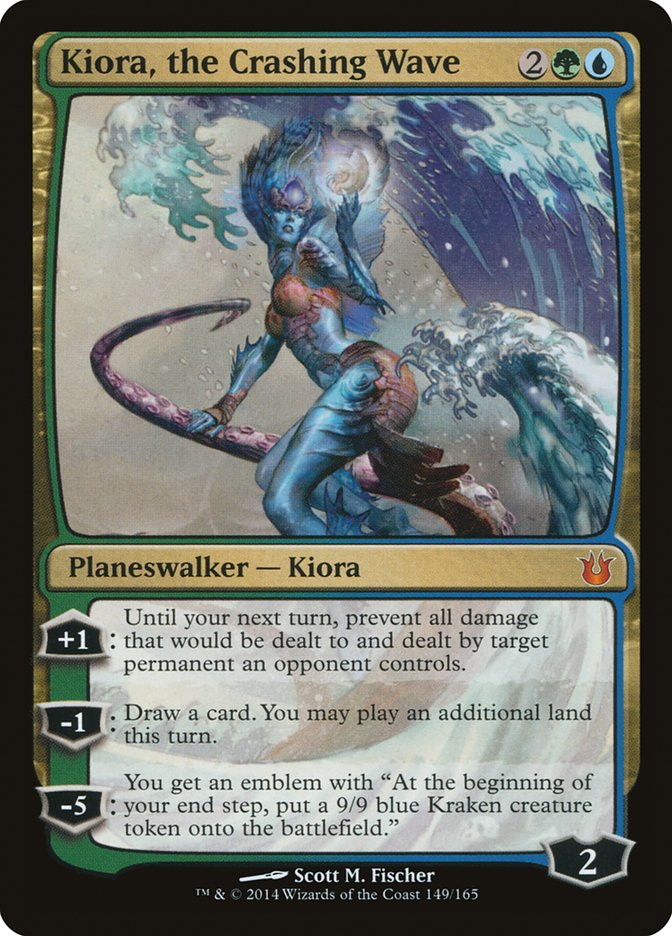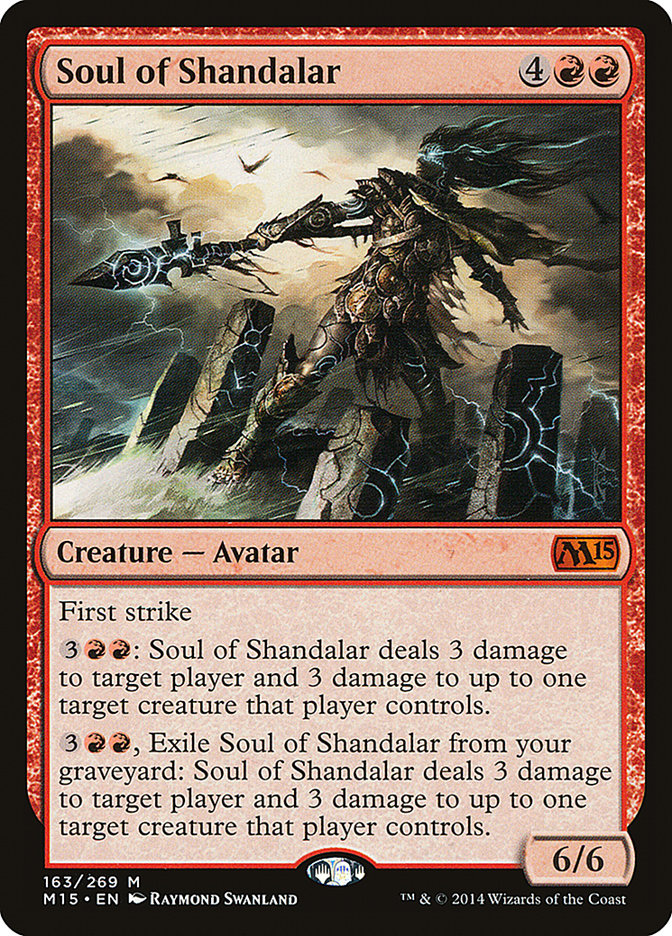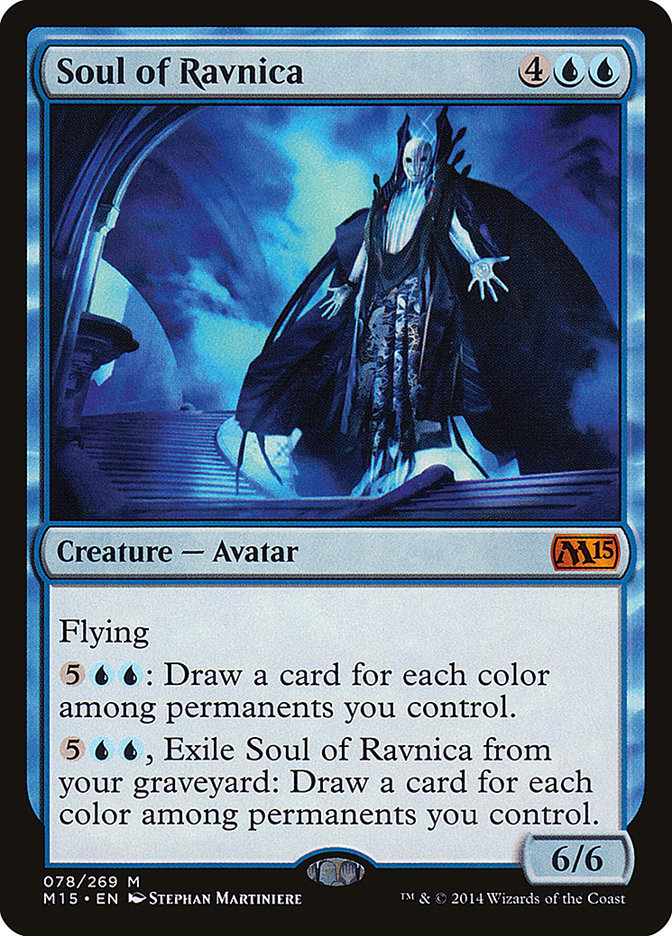There are times when I wonder what my life would be like if I lived it in a slightly different order. Ten years ago, I was living in Atlanta, having just
graduated from Emory University. I knew that I wanted to pursue games professionally, so I didn’t go looking for a “real” job, but instead focused on
playing and writing about Magic.
Back then though, there weren’t nearly as many tournaments. In the 2002-2003 season, there were eight total Grand Prix in North America. Last year, there
were three times that many. Perhaps more significantly, there is now the Open Series circuit, which offers the chance to play competitive Magic for big
prizes nearly every weekend of the year, especially for those players who live in the vicinity of SCG HQ in Roanoke, Virginia.
As I watched this past weekend’s Players’ Championship, I couldn’t help but think about how far Magic has come since I was a “professional Magic player”
living in Atlanta. I played in fewer than one tournament a month, and ultimately spent more time playing online poker than my game of choice simply because
there weren’t enough opportunities to compete. The explosive growth of Magic in the past few years has changed all that, and now the Eastern United States
is pretty much the best place you can live if you want to be a competitive Magic player. It certainly can’t hurt to be in easy driving distance of so many
Open Series events, which in turn gives you the best chance to qualify for the Players’ Championship.
I had some reservations about the SCGPC format as a viewer. It was difficult for me to understand what was going on, and it felt like the first day was
full of watching the players who were doing the worst rather than the best. That said, as a player I’m wholly jealous of the experience. I had the
opportunity to compete in the first two iterations of the new World Championships and they were probably my favorite tournaments I’ve ever played in. While
I love being a part of big events, smaller fields make the whole thing friendlier and more laid back since you’re playing against someone you know pretty
much every round.
Living in San Diego, I don’t see myself ever realistically qualifying for the SCG Players’ Championship. There aren’t enough events out on the west coast
to earn a points-based slot, which leaves me with just winning an Invitational as a qualification option. While I try to play in Invitationals when I can,
they’re tough fields, and only first place gets the honor of competing in the Players’ Championship–unless it’s Tom Ross again, because then the slot
drops down, since he apparently wins all of them.
If competitive Magic were in the state it is now ten years ago when I lived in Atlanta, I wonder if I ever would have left. If there were major tournaments
almost every weekend in driving distance or a short flight away, I wonder if I ever would have up and moved to California to take a job at Upper Deck doing
game design. But there weren’t, and here I am.
I certainly have no complaints about the direction my life has taken me, but I couldn’t help but feel a twinge of jealousy watching the coverage of the
Players’ Championship last weekend. Big congratulations to Brad Nelson for winning the whole thing. Brad is a player whose game I have always respected
more than most, I think. He has had his ups and downs over the years, but is clearly very much on an upswing these days. It’s clear his days spent making
VS Videos and the like has paid off, as there is literally no one I would choose over him to perform well in a Standard tournament.
Not only am I rather jealous of Brad’s victory, but I’m probably even more jealous of his discovery of Kiora, the Crashing Wave as a sideboard card in
Standard. Remember my article from last week where I talked about
wanting some kind of tool in Temur to deal with a resolved Siege Rhino, or about how I was disappointed by Xenagos and wished there was another good option
that was better positioned in the very midrange field that is Standard? Yeah, about that. Kiora exactly fits the bill on both accounts, and also happens to
be very very powerful against W/U Heroic, which is another place Temur can use some help.
I may not be able to qualify for the SCG Players’ Championship, but I can certainly use the tech from it at my next big event, which is going to be the
upcoming Standard Grand Prix in Denver at the beginning of the new year.
Kiora doesn’t mesh completely with the gameplan of my current Temur build, since it’s more of a controlling/delaying card, but I’ve been considering taking
the deck in something of a different direction. Given the hostility of a Siege Rhino format to aggressive decks, every time I make a shift to adapt, it
moves the deck in more of a midrange than aggro direction–and Kiora is certainly that.
Coincidentally, recent shifts in the Standard metagame had made me less happy with Ashcloud Phoenix, so I was already looking for another potential
four-drop. I loved Phoenix right after the Pro Tour, but it matches up very poorly against the increasingly popular Doomwake Giant. At the same time, both
Silence the Believers and Utter End are showing up more often nowadays, which means Phoenix is much less resilient than it once was. I think some number of
Phoenixes are still a reasonable inclusion, but I don’t think I still want the full four copies.
The move toward more planeswalkers and away from Phoenix (and Boon Satyr, in earlier versions) makes me more inclined to try Anger of the Gods as a
sideboard card, especially after Brad’s victory playing Sultai Reanimator with Sidisi, Brood Tyrant. I haven’t been a huge fan of Anger previously, because
I don’t like the idea of wiping out my own creatures and felt I could get much the same impact from Arc Lightning against many decks, but now that my own
creature base is much more Anger-proof, and Sidisi is likely to be a popular card, both the board wipe and exiling elements of the card are quite
attractive. Against Brad’s deck, in particular, it offers a way to clear the board of both Sidisi and her zombies, as well as to punch through a Hornet
Queen later in the game–and obviously also doubles as a great answer to aggressive decks looking to run you over with small creatures.
All of these changes look to play longer games, which leads me to want to play more cards that are powerful when things drag out. I have a whole list that
I want to try out, though I haven’t had a chance to play with everything yet. Near the top of the list are Sagu Mauler and Nissa, Worldwaker. Both are
aimed at combating the removal-overload plan that seems to be the standard operating procedure for Whip decks against other midrange green decks, since
they match up very well against Silence the Believers and Hero’s Downfall, and can even trample over Hornet Queen tokens to finish things off–assuming
Anger of the Gods isn’t there to clear the way. I played a bit with each of them in earlier Temur builds, and at the time dismissed them as too slow, but
the format has since shifted, and maybe they have what it takes nowadays.
The slightly more off the wall ideas include a couple of Souls–Soul of Shandalar and Soul of Ravnica. They each also match up well against opposing
removal, since they have abilities that can be activated whether they’re in play or in the graveyard. Oh, and they also happen to be 6/6 creatures for six
mana! Soul of Shandalar is the more attractive one on the surface, since the ability to Searing Blaze every turn seems exceptionally powerful in matchups
that revolve around a bunch of small creatures in play. Soul of Ravnica is a little more ambitious, since it requires a significant board in order to get
any value from its activated ability, which only draws cards and doesn’t impact the board right away. That said, Soul of Ravnica has flying, which is a
very powerful ability when it’s actually in play, and it certainly can draw quite a few cards if you happen to have a Savage Knuckleblade in play.
I’ve also considered playing some number of copies of Genesis Hydra, which is another powerful lategame card against removal. It plays very well with the
mana acceleration of both your mana accelerants and Kiora, though not so much with the various utility spells in the deck. It’s at the bottom of the list
as a result, but it’s worth keeping in mind.
Here’s where I’m looking to start with my testing after the holidays:
Creatures (26)
- 3 Polukranos, World Eater
- 4 Sylvan Caryatid
- 4 Stormbreath Dragon
- 3 Courser of Kruphix
- 4 Rattleclaw Mystic
- 2 Sagu Mauler
- 4 Savage Knuckleblade
- 2 Ashcloud Phoenix
Planeswalkers (5)
Lands (23)
Spells (6)

This isn’t so much a tuned decklist as a collection of ideas that I want to experiment with. I have an array of different planeswalkers in the maindeck so
I can get a chance to see how they all perform, as well as a sideboard full of individual cards that I want to try, like the Souls. I mixed up the maindeck
spell count to include a mix of Stubborn Denial, Crater’s Claws, and Temur Charm both to save sideboard space as well as to provide extra flexibility. Too
many times with my previous mix I found myself losing to a Siege Rhino with a hand full of Stubborn Denials, and that’s always a frustrating feeling.
Mostly, I’m excited to try out Kiora, and the more planeswalker-centric focus of the deck. In a slower and more midrange world, I have a feeling that Kiora
and Nissa may be the direction that Temur needs to take in order to be successful. Granted, it’s possible that Sultai is a better home for both, thanks to
the efficiency of cards like Murderous Cut and the effectiveness of my all-time favorite card, Thoughtseize, but that doesn’t mean that I’m going to give
up on Savage Knuckleblade just yet. I only have so many chances to play in tournaments these days, and I’m going to play a deck that I like…
What do you think? Is midrange the direction to take Temur in the current Standard metagame? Are there any cards I’ve missed in my exploration here?



